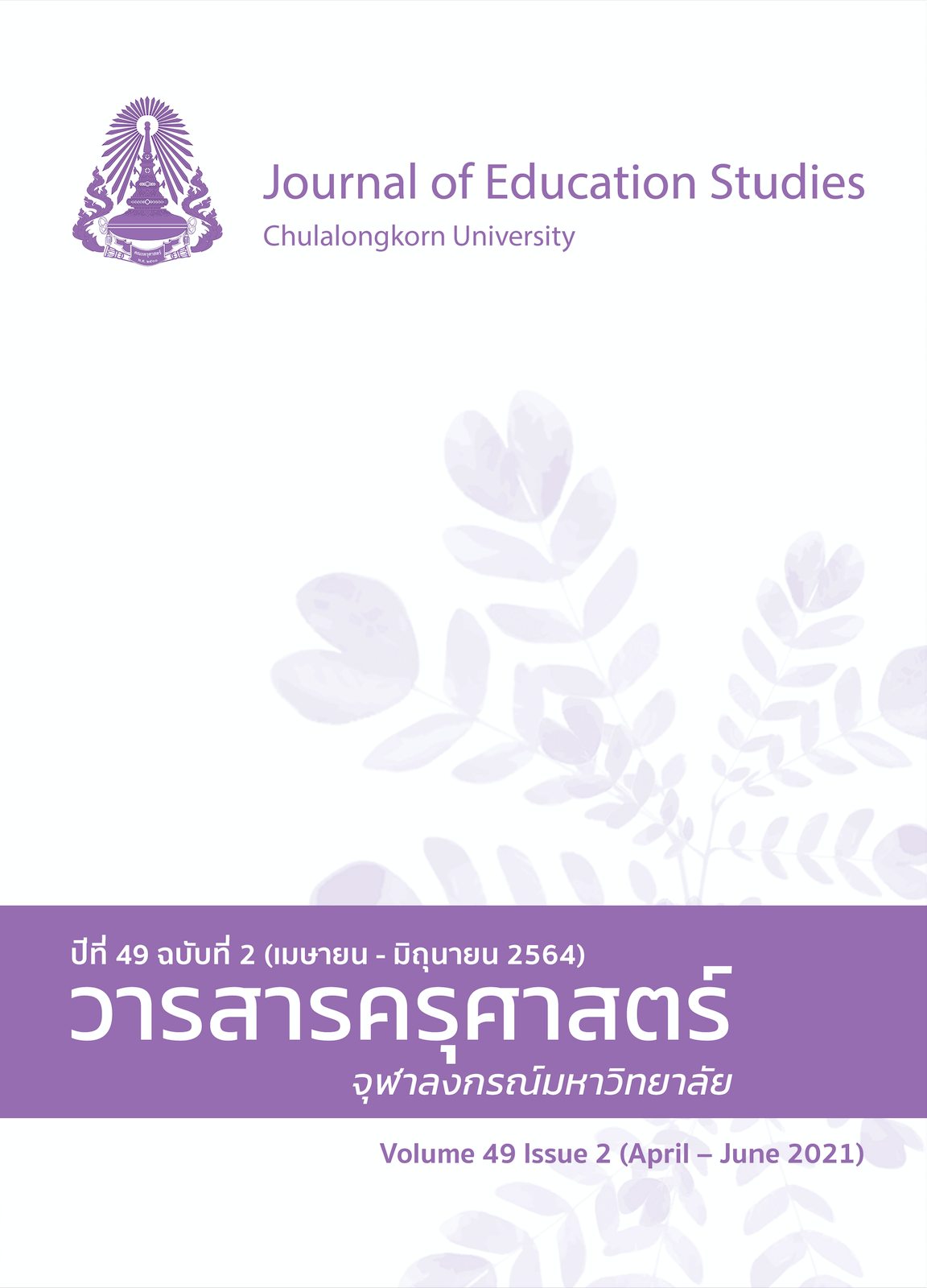Artificial Intelligence (AI) Technology and the Categorization of Fifth Grade Students’ Academic Achievements Using K-means Clustering Learning Algorithm
DOI:
https://doi.org/10.14456/educu.2021.36Keywords:
artificial intelligence AI, learning achievement, clustering learning, K-meanAbstract
The objectives of this research are to categorize the academic achievements of student samples into subgroups of excellent, average, or weak, and to categorize their learning achievements in each subject into subgroups of outstanding, fair, or poor. Thirty-three students from fifth grade at Samsen Nok School (Prachrat Anukul), Khet Din Daeng, Bangkok were sampled during Academic Year 2018. The students were selected using a simple random sampling technique. The research adopted the K-means clustering algorithm, an artificial intelligence (AI) technology, as a tool for data collection. Academically, 11 students were considered excellent, 11 average, and 11 weak. With regard to learning achievement in each subject, the students were categorized as outstanding in four subjects, fair in three subjects, and poor in three subjects. History and Home Economics were the students’ strongest subjects, while English was their poorest subject. Courses in the dominant group, there were 3 courses, and the middle group had 3 courses, and the lower group had 3 courses.
References
กิดานันท์ มลิทอง. (2540). เทคโนโลยีทางการศึกษาและนวัตกรรม. จุฬาลงกรณ์มหาวิทยาลัย
ใจทิพย์ ณ สงขลา, ธีรวดี ถังคบุตร, โอภาส เกาไศยาภรณ์ และ เฉลิมรัฐ นาควิเชียร. (2559). อภิวัฒน์ขอบข่ายเทคโนโลยีการศึกษา : จากอนาลอกสู่ศตวรรษนวัตกรรมดิจิทัล. Journal of Education Studies, 44(4), 294-313.
ชัยยงค์ พรหมวงศ์. (2521). นวัตกรรมและเทคโนโลยีทางการศึกษากับการสอนระดับอนุบาล. ไทยวัฒนาพานิช
ชัยยงค์ พรหมวงศ์. (2537). สรุปการสัมมนาวิชาการ เรื่อง เทคโนโลยีและสื่อสารการศึกษาไทยในกระแสโลกนุวัตร. จุฬาลงกรณ์มหาวิทยาลัย
ปราลี มณีรัตน์. (2554). การสร้างโมเดลการจัดการระบบนักศึกษาสัมพันธ์ โดยใช้เทคนิคเหมืองข้อมูล. มหาวิทยาลัยศรีปทุม.
วันเพ็ญ ผลิศร, นีลวัสน์ ดิษฐสวรรค์ และ ณรงค์ศักดิ์ แสงป้อ. (2559). การพัฒนาระบบสารสนเทศเพื่อการจัดการโครงงานและผลงานวิจัย ด้วยเทคนิค Cluster analysis กรณีศึกษาสาขาวิชาวิศวกรรม คอมพิวเตอร์ มหาวิทยาลัยเทคโนโลยีราชมงคลสุวรรณภูมิ. มหาวิทยาลัยเทคโนโลยีราชมงคลสุวรรณภูมิ
วีระยุทธ พิมพาภรณ์ และ พยุง มีสัจ. (2557). การเปรียบเทียบประสิทธิภาพการจัดกลุ่มข้อมูล โดยวิธีการเลือก ลักษณะสำคัญแบบพลวัตเพื่อเพิ่มประสิทธิภาพของอัลกอริทึม การจัดกลุ่มบนปริภูมิย่อย. Information Technology Journal, 10(2), 43-51.
ภาษาอังกฤษ
Asif, R., Merceron, A., & Pathan, M. K. (2014). Predicting student academic performance at degree level: A case study. International Journal of Intelligent Systems and Applications, 7(1), 49.
Force, A. T. (1977). The definition of educational technology. Association for Educational Technology. https://ocw.metu.edu.tr/file.php/118/AECT_Definition_20of_20Educational_20Technology.pdf
Hutton, D. M. (2011). The quest for artificial intelligence: A history of ideas and achievements. Kybernetes.
Lloyd, S. P. (1982). Least squares quantization in PCM. IEEE Transactions on Information Theory, 28(2), 128-137.
Sardareh, S. A., Aghabozorgi, S., & Dutt, A. (2015). Applying clustering approach to analyze reflective dialogues and students' problem solving ability. Indian Journal of Science and Technology, 8(11), 70657.
Downloads
Published
How to Cite
Issue
Section
License

This work is licensed under a Creative Commons Attribution-NonCommercial-NoDerivatives 4.0 International License.




